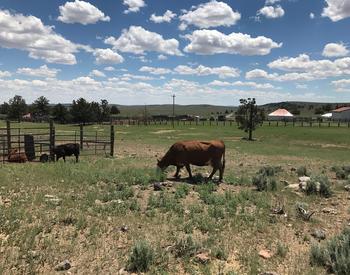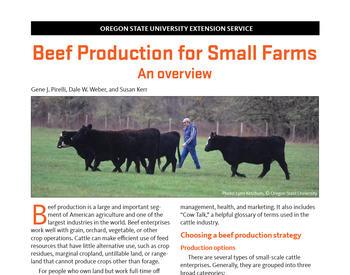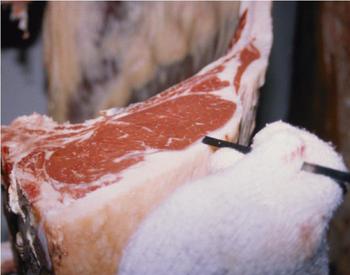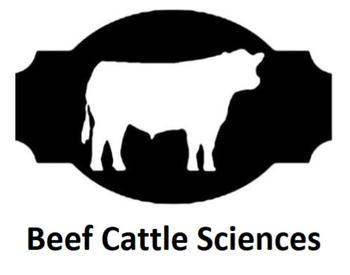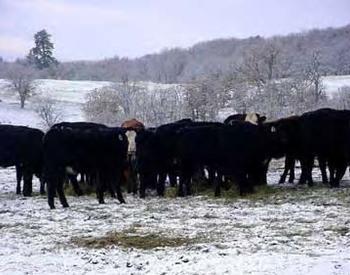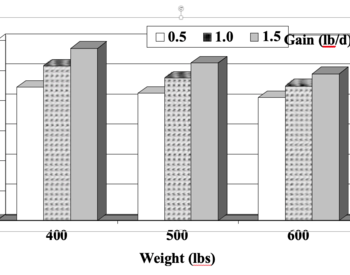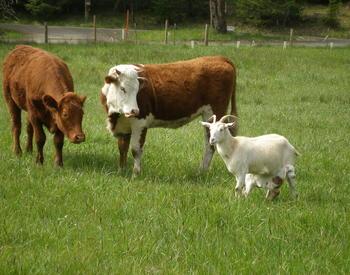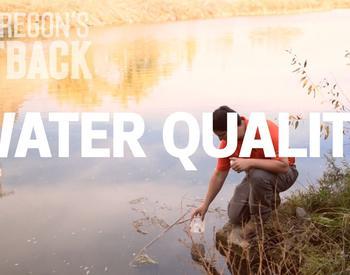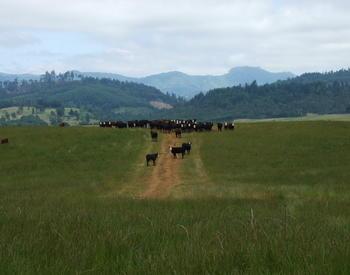Introduction
The cattle industry in U.S. loses about $1 billion dollars yearly due to death caused by health issues. An example is the bovine respiratory disease (BRD) complex, which presents the most significant and costly health problem, with expenses estimated at $650,000 million every year.
These include:
- medication
- trained personnel to observe sick calves
- wasted feed,
- reduced performance, given that this disease is highly associated with morbidity and mortality rates.
The causes for the development of BRD are viral and/or bacterial infections associated with stressful management procedures that cattle experience from weaning to feedlot entry. These management procedures, which may occur together or in a short period of time, include weaning, transportation to the feedlot, change in social hierarchy of the group, novel sources of feed and water, castration, and dehorning.
Therefore, strategies to alleviate the magnitude of stressful events and the incidence of diseases, such as BRD, have been developed. This article will provide information regarding the effects of stress on health and immune system, as well as feasible strategies that may be adopted by beef producers to prevent stress-related diseases in the herd.
Stress and its effects on the body
Stress is defined as the reaction of an animal to factors (also known as stressors) that potentially influence its homeostasis, whereas animals that are unable to cope with these stressors are classified as stressed. According to Carrol and Forsberg (2007), stressors may be grouped into:
- Psychological stressors: Include commingling or social mixing, novel environment, and fear.
- Physical stressors: Include diseases, injury, fatigue, hunger, and dehydration.
- Physiological stressors: Include deviation from normal endocrine or neuroendocrine functions caused by psychological and physical stressors.
Upon a stress stimulus, several responses are activated in the animal’s brain, ultimately leading to the production and release of the “stress hormone” known as cortisol. Cortisol has diverse biological effects in the body, including modulation of the immune system and breakdown of body tissues to increase the availability of nutrients to the animal. The cortisol balance in the body is extremely important, given that cortisol may cause different responses on the immune system according to the duration and magnitude of the stressful situation. As an example, extended periods of stress and elevated circulating cortisol lead to severe physiological problems, such as immunosuppression, reduced growth and reproduction rates, and suppressed milk production. Similarly, inadequate supply of cortisol causes fatigue, susceptibility to autoimmune disorders, and inflammation.
Recently, a study conducted at the Eastern Oregon Agricultural Research Center (EOARC, Burns, OR) demonstrated the effects of stress on the immune system of healthy beef steers. In this study, a hormone (corticotrophin-releasing hormone; CRH) that induces the production of cortisol was infused in healthy beef steers, and consequently stimulated an acute stressful situation. These authors reported that upon CRH stimulus, the immune system was activated, initiating inflammatory responses as part of the protective mechanism of the body. It is now recognized that not only pathogens, but also acute stressful events, may stimulate the immune system, consequently affecting health and performance of healthy beef animals.
Stress x Immune system
For more information about the immune system and its main features, please refer to BEEF043. Briefly, the immune system is divided into the innate and acquired immunity. The innate system is considered the first defense of the body, being activated immediately after stress and/or pathogen infection. Another feature of the innate immunity is the non-specificity, meaning that it is functional against any pathogen (virus, bacteria, or protozoa) or stress.
On the other hand, the acquired immunity is responsible for adapting and building an immune response specific for each pathogen infecting the animal, and is characterized by production of antibodies and creation of an immunological “memory”.
One important point to keep in mind is the difference between pathogen and stress-induced immune reactions, given that only pathogens stimulate an acquired immune response. During a stressful event, there’s no specific pathogen that the immune system recognizes to start antibody production and thus, only the innate immune system is activated. Therefore, the focus of this article will be the effects of stressful situations on the innate immunity and its responses.
Strategies to alleviate stressful situations
Activation of the innate immune system by acute stressor leads to inflammatory processes that have been associated with increased incidence of morbidity, subsequent requirement for medication treatment, reduced growth rates, and detrimental effects on carcass quality and meat tenderness.
Therefore, management alternatives to alleviate the effects of acute stressful situations on subsequent health and performance of beef cattle have been developed. Examples of strategies to alleviate stress- related immune responses when feeder cattle are transported to the feedlot include:
Early weaning
Early weaning (from 90 to 150 d of age) is a management practice that has been shown to improve reproductive performance of mature beef cows and feedlot performance of calves, as well as alleviate inflammatory responses of calves after an acute stress (transport to feedlot) or bacterial challenge. Reduced inflammatory responses upon transport in early-weaned calves may explain the improved feedlot performance compared with normal weaned cohorts, given that inflammation is highly associated with reduced dry matter intake (DMI), and consequently average daily gain (ADG) and feed efficiency.
Polyunsaturated fatty acids (PUFA) supplementation during preconditioning
Polyunsaturated fatty acids, such as linoleic and linolenic acids, have several functions in the body, including integrity of cell membranes, signal transduction, and precursors for numerous biologically active compounds involved on the reproductive and immune systems. More specifically, in the immune system, linoleic acid and its derivatives (omega-6) promote the production of pro-inflammatory compounds, whereas linolenic acid and its derivatives (omega-3) stimulate the synthesis of anti-inflammatory compounds.
Based on this rationale, a study was conducted at EOARC to evaluate the effects of rumen-protected PUFA supplementation (Megalac-R; 4.52 and 0.29% of linoleic and linolenic acids [DM basis], respectively) during preconditioning (d -28 to 0) before transport and feedlot entry (growing and finishing phases). In that study, steers provided PUFA had reduced DMI, but similar ADG and feed efficiency during preconditioning compared with other treatment (Control: corn and soybean meal- based diet). In addition, blood concentrations of inflammatory compounds from samples obtained 3 days after transportation and feedlot entry were reduced in PUFA-supplemented steers. As a result, feedlot performance and carcass quality were greater in steers that received PUFA during preconditioning compared with non-supplemented cohorts.
Conclusions
Acute stressful situations and not only diseases and infections, activate the immune system, and are responsible for the reduced performance and health often observed in highly-stressed cattle. Strategies such as early weaning and PUFA supplementation were successful in alleviating the adverse effects of acute stress on cattle health and performance. Hence, it is important that beef producers always look for feasible strategies to alleviate stress and improve the performance and health of the herd, consequently improving the profitability of the beef cattle operations.
References
Arthington et al. 2005. J. Anim. Sci. 83:933-939.
Carroll, J. A. and N. E. Forsberg. 2007. Vet. Clin. Food Anim. 23:105-149.
Carroll et al. 2009. J. Anim. Sci. 87:4167-4172. Cooke, R. F. and D. W. Bohnert. 2011. J. Anim. Sci. 89:252-257.
Cooke et al. 2011. J. Anim. Sci. 89:3677-3689.
Loerch, S. C., and F. L. Fluharty, 1999. J. Anim. Sci. 77:1113-1119.
This document is part of the Oregon State University - Beef Cattle Library. Prior to acceptance, this document was anonymously reviewed by two experts in the area.
